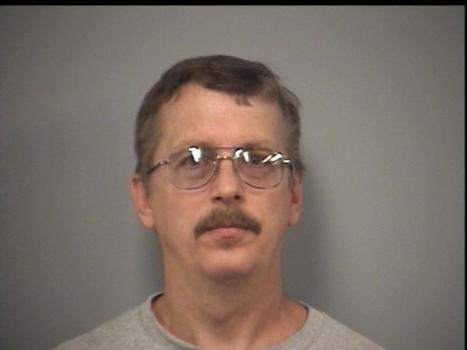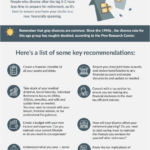
Law Enforcement and Community Safety: Reflecting on Unusual Incidents
The recent spate of incidents reported in our local news has stirred discussions about how law enforcement, legal institutions, and community trust are interwoven in our society. In this editorial, we aim to take a closer look at a selection of events—from an unexpected law enforcement response at a local school to high-stakes family disputes over a famous artist’s estate—and offer a measured, opinionated perspective on their long-run implications.
These stories, though diverse in nature, highlight the tricky parts of managing public safety, family conflicts, and administrative oversight. As we dive in, we will poke around the responses from authorities, analyze the fine points of legal accountability, and offer our readers a balanced view on the challenges facing our community today.
Unexpected Law Enforcement Responses: When Community Safety is on Edge
An Incident at the Sierra Waldorf School
Earlier this week, alarm bells rang loud at the Sierra Waldorf School on Rawhide Road in Jamestown when a school employee reported a naked man seen near the institution. The caller described the situation as one where the individual was yelling for help while banging on a nearby structure—a scene that was visible to students and teachers alike.
Within minutes, deputies from the Tuolumne County Sheriff’s Office arrived on the scene with lights and sirens blazing. Their rapid response illustrates the level of preparedness expected in today’s law enforcement, even when the scenario turns out to be less menacing than originally reported. Witness accounts and official statements indicate that the man in question was later identified as being connected to a residence catering to special needs adults. A welfare check determined he was safe and did not need any intervention by the police.
This episode raises several important questions. How do we strike a balance between ensuring safety and avoiding undue alarm? Moreover, what are the implications for school policies regarding safety checks and rapid response protocols?
Key Takeaways from the Incident
- Immediate action is crucial in situations where public safety seems compromised.
- Clear communication between school officials and law enforcement can help minimise confusion during tense moments.
- The incident underscores the need for training that helps officers figure a path through potentially misunderstood circumstances.
Ultimately, while this event may seem trivial in the grand scheme of things, it serves as a reminder that sometimes our community is forced to deal with both the confusing bits and the nerve-racking twists and turns of modern public safety scenarios.
Federal Funding Turbulence: Controversial Disruptions in Higher Education
Suspension of Funding for Cornell and Northwestern
In a move that has ignited passionate debate among academics and policymakers alike, over $1 billion in federal funding allocated to Cornell University and roughly $790 million earmarked for Northwestern University have been frozen. According to statements from the White House, the suspension is part of a broader investigation over alleged civil rights violations at these institutions.
While many view this development as a bold move designed to hold universities accountable for potential legal missteps, others see it as a dangerous interference in academic autonomy. The situation is laden with problems and tense political overtones, highlighting just how complicated these federal interventions can become when multiple legal and political interests are at stake.
The freezing of these funds shows a classic case of federal oversight trying to steer through tricky parts of bureaucratic accountability. On one side, taxpayers demand a proper check against any abuse of civil rights; on the other hand, critics argue that academic institutions must be allowed to get around their internal issues without excessive external pressure.
What This Means for Higher Education
| Aspect | Points of Contention | Possible Outcomes |
|---|---|---|
| Accountability |
|
Enhanced oversight or potential restructuring of policies |
| Academic Freedom |
|
Calls for balanced governance that respects academic autonomy |
| Political Ramifications |
|
Further reviews and possibly long, convoluted legal battles |
This table captures some of the tangled issues inherent in the debate over federal funding and academic oversight. Whatever the outcome, this case sheds light on the delicate dance between government oversight and institutional autonomy—a dance filled with complicated pieces that require both careful negotiation and steadfast commitment to fairness.
Familial Legal Battles: The High-Stakes Dispute over Tony Bennett’s Estate
Family Feud Over a Legendary Legacy
In another headline-grabbing case, Tony Bennett’s two daughters have initiated a lawsuit against their brother, accusing him of unethical conduct both before and after their father’s passing in 2023. The lawsuit alleges that he enriched himself at the expense of his sisters—a claim that brings family discord into the public legal spotlight.
This situation is a perfect example of how family disputes can escalate into nerve-racking legal battles when money and legacy are involved. Estate disputes of this nature can quickly become overwhelming for all parties concerned, especially when a beloved public figure is involved.
Legal experts point out that such cases are typically riddled with tension and loaded with the fine points of probate law. When familial love and longstanding relationships intersect with the cold, hard requirements of the law, even small distinctions in evidence or testimony can create far-reaching consequences.
Legal and Ethical Considerations
- Conflict of Interest: Family members may prioritize personal gain over fair distribution of assets.
- Documentation and Probate Laws: Every little twist in paperwork can dramatically alter the outcome.
- Emotional Toll: Legal disputes can leave familial bonds in tatters, regardless of the monetary stakes.
For many observers, this case is more than just a legal squabble—it is an emotional saga unfolding in public view. It reminds us of the importance of transparent estate planning and the need for clear legal guidelines to help steer through the nerve-racking parts of family inheritance conflicts.
Local Scams and the Call for Vigilance in the Community
Scam Warnings in Tuolumne County
Local law enforcement in Tuolumne County has recently issued warnings about the appearance of scam artists roaming the community. These scams, often wrapped in layers of deception and confusing bits of misinformation, underscore a pervasive theme: the necessity for constant vigilance.
While the details of these scams vary, they all share the common trait of preying on the unsuspecting and exploiting small distinctions in trust and legal protections. The sheriff’s office has been proactive in advising residents on several key steps to steer through these problems:
- Scrutinize any unexpected offers or requests for personal information.
- Report suspicious activities to local law enforcement immediately.
- Verify the legitimacy of any claims by consulting trusted sources.
These bullet points serve as a simple guide to help residents get around the intimidating aspects of modern fraud techniques. Staying alert and informed is key to protecting oneself from falling victim to scams that, though often on the surface seem petty, can escalate into situations loaded with issues affecting trust and community cohesion.
Judicial Accountability and Legal Ethics: The Wisconsin Justice Story
Surrendering a License Amid Allegations of Misconduct
An equally compelling story involves a former Wisconsin Supreme Court justice who, after leading an investigation into election irregularities from the 2020 cycle, agreed to give up his law license. This case, where the ex-justice was accused of conducting his duties in a manner that many described as being full of problems, raises intricate questions about judicial behavior and accountability.
The decision to surrender a license is not one made lightly in the legal world. It calls into question the processes that govern our legal institutions and emphasizes that no one is above the law. In such situations, even the slight differences in handling evidence or testimonies can result in far-reaching implications within the legal community.
For legal professionals and the public alike, this case serves as a reminder that maintaining high ethical standards is super important, even when the issues at hand are as tangled as the twists and turns of a courtroom drama.
Important Lessons for the Legal Community
- Self-regulation: Legal professionals must constantly get into the nitty-gritty of ethical considerations.
- Transparency: Open investigations help build trust in the justice system.
- Accountability: No matter how esteemed, when legal boundaries are crossed, consequences must follow.
This episode invites us to reflect on the delicate balance between maintaining judicial independence and ensuring that misconduct is not allowed to slide under the radar.
The Role of Media and Public Discourse in Legal Affairs
How Reporting Shapes Legal and Political Narratives
Media outlets play a super important role in reporting and framing legal cases. Whether it is a case of a nude man near a school, sweeping funding cuts at major universities, or bitter familial disputes over an estate, news reports help set the stage for public debate by highlighting both the big picture and the fine shades in between.
With a mix of detailed investigative reporting and opinion pieces, media organizations are tasked with presenting the facts while simultaneously offering perspectives on the subtle parts of each incident. In doing so, they assist the public in figuring a path through the overwhelming layers of information that often accompany legal controversies.
Consider this simple overview:
- Community Safety: Rapid law enforcement responses and ongoing security measures in schools.
- Institutional Accountability: Government actions that directly affect academic institutions and the broader implications for public policy.
- Familial and Ethical Disputes: The intricacies of handling family disputes and estate litigation in the public sphere.
Through such comprehensive reporting, the media invites readers not only to absorb the information, but also to engage with the multifaceted issues at hand, thereby encouraging a more informed and balanced community discourse.
Balancing Personal and Public Interests in Legal Disputes
When Personal Grievances Enter the Public Arena
The complex interplay between personal disputes and the public interest is perhaps best exemplified by the ongoing legal battle within the Bennett family. Legal disputes over estates are rarely confined to small circles; they often spill over into public view, prompting wider discussions about fairness, responsibility, and the role of the legal system in resolving sensitive matters.
This case is particularly illustrative of how seemingly personal issues are actually loaded with broader lessons. It compels us to consider several key factors, including:
- How the legal system assesses evidence in familial conflicts.
- The impact of public perception on the outcome of private disputes.
- Strategies for managing legal challenges when personal relationships are on the line.
For the affected family members and for legal practitioners, these are not merely academic points, but practical challenges that need meticulous handling. The trial process, documentation, and expert testimonies all represent fine shades that contribute to the overall resolution—and collectively, they reveal how personal legal disputes are anything but straightforward.
Controversial Political and Legal Interventions: A Closer Look
Government Actions, Legal Challenges, and Their Broader Impact
The controversies surrounding federal action—such as the freezing of funds for higher education—and other politically charged legal decisions add yet another layer of complexity to our current legal landscape. In many cases, these decisions are met with divided opinions. Some argue that decisive action is key to ensuring adherence to civil rights standards, while others worry about the intimidating reach of government interventions into private domains.
Each of these measures is loaded with political and legal undercurrents, prompting serious reflections on how power is wielded and how institutions are held accountable. It is a reminder of the unpredictable twists and turns that occur when legal enforcement meets political ambition.
To illustrate this, here are some of the common challenges encountered in such scenarios:
- Understanding the legal framework that guides federal actions.
- Deciphering the subtle details that differentiate legitimate oversight from overreach.
- Appreciating the conflicting interests at the intersection of politics and law.
By dissecting the situation from multiple angles, it becomes clear that while these issues may seem overwhelming at first glance, a closer examination reveals a series of manageable components—each one demanding careful scrutiny and balanced judgment.
Practical Steps for Legal and Community Resilience
How Stakeholders Can Work Together to Overcome Challenges
Given the wide range of legal and community challenges discussed above, it is essential for all stakeholders—law enforcement, community members, legal professionals, and academics—to work together in managing their way through these complicated pieces. Here are some practical suggestions that can help reinforce community resilience:
- Enhanced Communication: Establish clear channels of communication between community organizations and law enforcement to ensure rapid yet measured responses to unexpected incidents.
- Regular Legal Workshops: Organize community seminars and legal workshops to help citizens poke around the fine points of new laws and legal changes, whether related to higher education funding or estate disputes.
- Transparent Investigations: Urge government agencies and legal institutions to make their investigations as transparent as possible, thereby demystifying the process for the public.
- Family Mediation Services: Encourage and support mediation services to help resolve familial legal disputes before they escalate to costly and nerve-racking court battles.
- Fraud Prevention Initiatives: Launch local initiatives aimed at raising awareness on how to avoid scams, ensuring that residents are better equipped to differentiate between genuine offers and deceptive ploys.
These points form the basis of a proactive approach to community safety and legal clarity. Ultimately, the objective is to find effective, balanced strategies that protect individual rights while upholding public safety—a task that requires cooperation and dedication from all sectors of society.
Looking Ahead: The Importance of Adaptability in a Changing Legal Landscape
Adapting to New Challenges in Community and Legal Governance
As we look ahead, it is clear that our legal and governance systems must remain adaptable in the face of evolving challenges. The recent episodes—from unusual law enforcement calls to contentious political interventions—underline the need for flexibility and continuous improvement in our approaches to managing community and legal affairs.
Stakeholders must work through the tangled issues by continually reassessing strategies and addressing the subtle parts of each new problem as they appear. It is essential for our institutions to:
- Review and update operational protocols in response to unforeseen incidents.
- Engage in ongoing dialogue with the public to gauge the effectiveness of legal and community measures.
- Invest in training and resources that enable law enforcement and legal practitioners to get around unpredictable challenges.
By taking a proactive stance toward emerging issues, our community can not only weather current storms but also set a blueprint for managing future challenges. There is much to be learned from prior incidents, and the collective experience offers key insights into how society as a whole can steer through the overwhelming twists and turns of an ever-changing legal landscape.
Conclusion: Reflections on Community, Accountability, and Resilience
Striving for Fairness Amid Complex Challenges
In our modern society, news headlines can often paint a picture of chaos and discord. From a naked man causing alarm at a school to federal funding freezes that stir political controversy, the breadth of incidents on our news feeds seems to confirm that we live in a world where complexities are rife. However, a deeper inspection reveals that these events, when broken down into their component parts, offer valuable lessons in accountability, resilience, and the importance of measured responses.
The incidents discussed in this editorial are not merely isolated events, but part of a larger narrative where law enforcement, legal systems, government interventions, and personal disputes intersect. By using clear communication, transparent procedures, and community engagement, we can hope to untangle even the most intimidating legal challenges and ensure that our institutions work for everyone.
Every challenge—from the nerve-racking moments of an unexpected law enforcement call to the overwhelming pressures of a high-stakes family legal battle—serves as a reminder that effective governance and a resilient community depend on collaboration and open dialogue. It is our shared responsibility to get into the nitty-gritty of these issues and push for reforms that respect both individual rights and public safety.
In closing, while the path ahead might be riddled with tension and full of problems, it is also rich with opportunities for reform and progress. The collective insights gleaned from these diverse legal and community challenges offer a beacon of hope—one that encourages us to work together, address the confusing bits head-on, and ultimately build a more accountable and just society for all.
Originally Post From https://www.mymotherlode.com/news/local/3741427/nude-man-spurred-law-enforcement-response-to-local-school.html
Read more about this topic at
Nude Man Arrested Walking On The Highway In Dover
Naked man allegedly exposes himself to clerk at Enfield store


